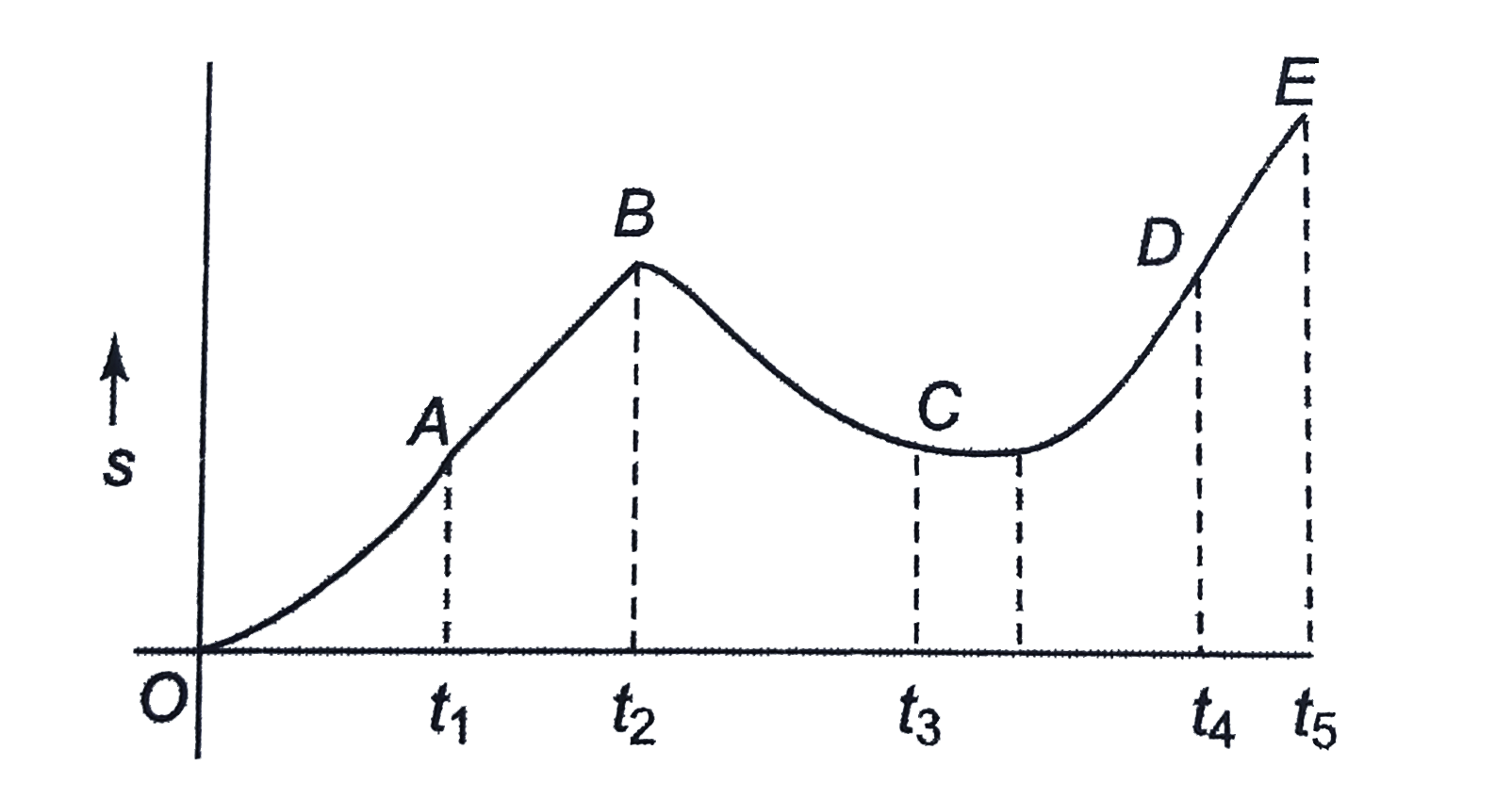Two identical negative charges are fixed on X axis at equal distances from the origin (O). A particle having positive charge starts at a large distance from O, moves along the Y axis, passes through the origin and moves far away from O in the positive Y direction. Describe qualitatively how its acceleration charges as it moves. Draw a rough graph showing the variation of acceleration (a) vs position of the particle (y). Take the acceleration of the particle to be positive in + Y direction.
The correct Answer is:(##IJAPHYV02C06E01009_A01##)
Step by step video, text & image solution for Two identical negative charges are fixed on X axis at equal distances from the origin (O). A particle having positive charge starts at a large distance from O, moves along the Y axis, passes through the origin and moves far away from O in the positive Y direction. Describe qualitatively how its acceleration charges as it moves. Draw a rough graph showing the variation of acceleration (a) vs position of the particle (y). Take the acceleration of the particle to be positive in + Y direction. by Physics experts to help you in doubts & scoring excellent marks in Class 12 exams.
Topper's Solved these Questions
- BOOK - ARIHANTCHAPTER - ELECTROSTATICSEXERCISE - Level 277videos
ELECTROSTATICS
- BOOK - ARIHANTCHAPTER - ELECTROSTATICSEXERCISE - Level 359videos
ELECTROSTATICS
- BOOK - ARIHANTCHAPTER - ELECTROMAGNETIC INDUCTIONEXERCISE - Level 312videos
ELECTROMAGNETIC INDUCTION
- BOOK - ARIHANTCHAPTER - GEOMETRICAL OPTICSEXERCISE - Level 39videos
GEOMETRICAL OPTICS
Similar Questions
Two identical positive charges are fixed on the y-axis, at equal distances from the origin O. A particle with a negative charges starts on the x-axis at a large distance from O. moves along the x-axis passes through O, and moves far away from O on the other side. Its acceleration a is taken as positive along its direction of motion. Plot acceleration a of the particle against its x-coordinate.
View SolutionA particle starts from rest at the origin and moves along the positive x direction. Its acceleration a versus position x graph is shown in the figure. The velocity of the particle at x = 6 m is?
View Solution
Knowledge Check
- Question 1 - Select One
An electron released on the axis of a positively charged ring at a large distance from the centre will
ANot moveBDo oscillatory motionCDo SHMDDo non-periodic motion - Question 2 - Select One
Two equal negative charges are fixed at points and on y-axis. A positive charge Q is released from rest at the point on the x-axis. The charge Q will:
Aexecute simple harmonic motion about the originBmove to the origin and remain at restCmove to infinityDsame as at point 25 cm aways form the surface - Question 3 - Select One or More
A positive charged particle when moves from potential to lower potential
Aits potential energy must decreaseBit potential energy may decreaseCits kinetic energy must increaseDits kinetic energy may increase
A body starts from the origin with an acceleration of 6ms−1 along the x - axis and 8ms−1 along the y - axis. Find its distance from the origin after 4s.
View SolutionA particle is moving along the x-axis and its position-time graph is shown. Determine the sign of acceleration.
 View Solution
View SolutionA point moves so that its distance from y-axis is half of its distance from the origin. Find the locus of the point.
View SolutionA is a point on the positive x-axis at a distance 3 units from the origin and B is a point on the positive y-axis at a distance 4 units from the origin. If P divides AB in the ratio 1 : 2, the coordinates of P are
View SolutionTwo equal positive charges Q are fixed at points (a, 0) and (−a,0) on the x-axis. An opposite charge -q at rest is relased from point (0, a) on the y-axis. The charge -q will
View Solution
